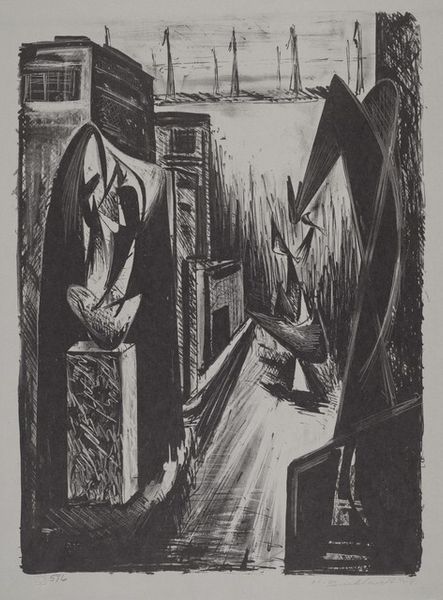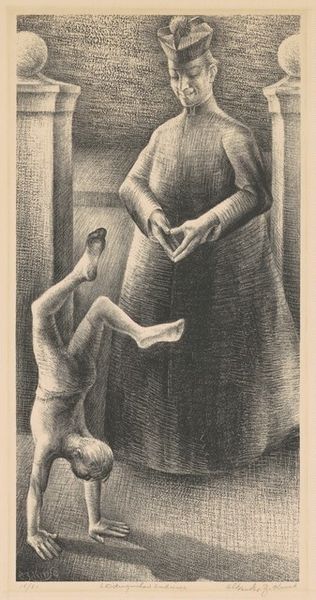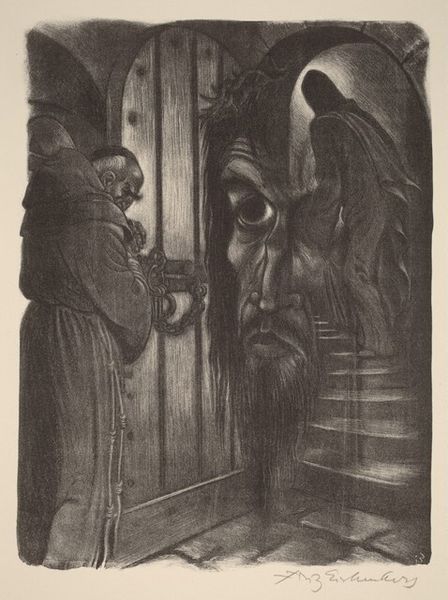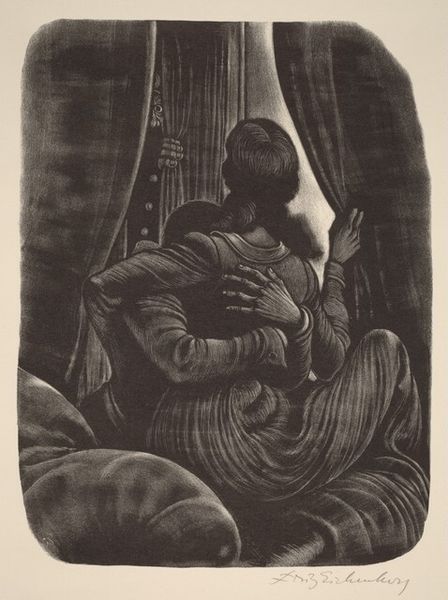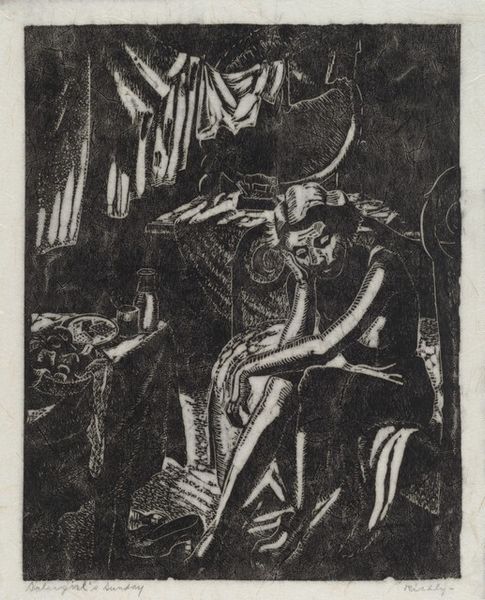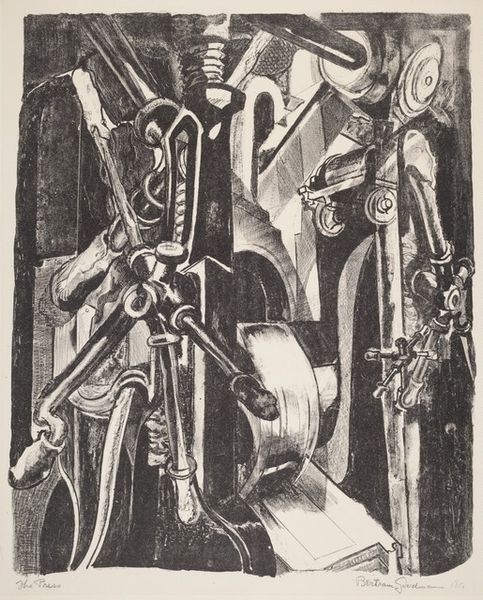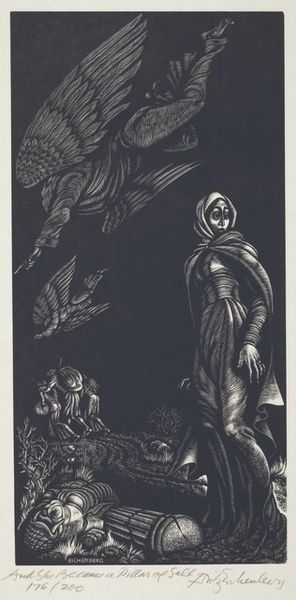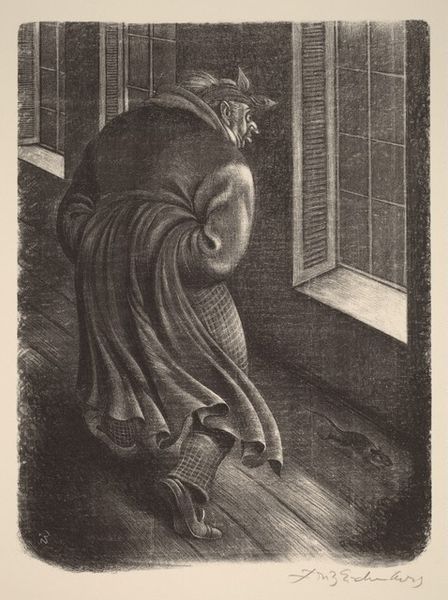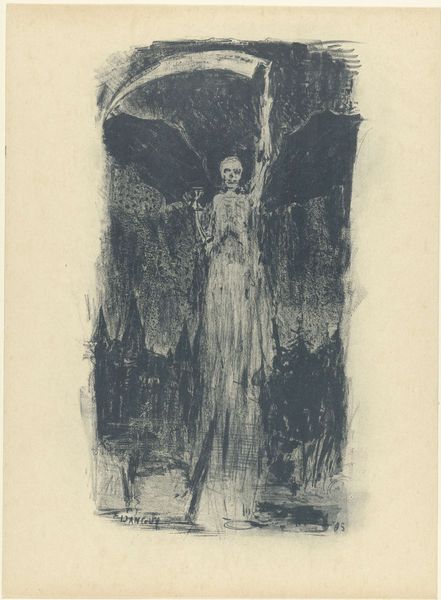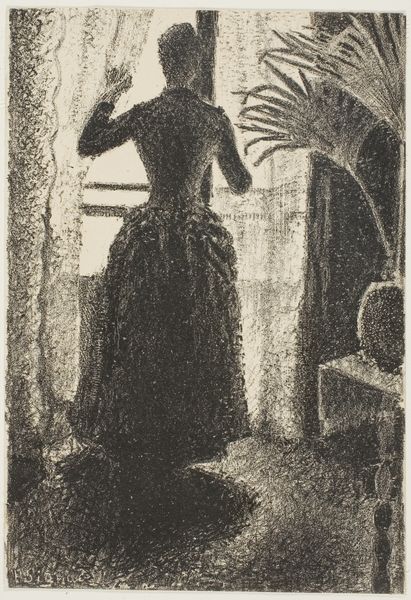
The Ardent Heart (Book III: The Sensualists, facing p.86) 1949
0:00
0:00
Copyright: National Gallery of Art: CC0 1.0
Editor: So, this is Fritz Eichenberg's "The Ardent Heart," created in 1949. It's an engraving, very striking in its use of light and shadow. I'm curious about the process... it must've been so labor-intensive to create all those fine lines. What strikes you about it? Curator: For me, it's about considering this print as a *multiple*, as an object that facilitates dissemination and consumption. This work wasn't intended as a unique art object in the traditional sense, but as part of a larger commodity—a book. Consider the social context: post-war anxieties, gender roles, and even access to leisure and printed material shaped its meaning. Editor: A commodity... I hadn't really thought of it that way. So, the choice of engraving would have implications for its availability and audience? Curator: Precisely. Engraving allowed for relatively large print runs, making it more accessible than a unique painting. How does the imagery then play into this act of consumption? Are the characters portrayed in ways that resonate with a 1940s audience, in terms of their desires or social standing? The clothing, the setting... all speak to a specific moment and market. Editor: So, the 'ardent heart' itself becomes a kind of... branding? A way to sell the book by suggesting a certain emotional experience tied to social structures and expectation? Curator: Exactly. We need to think about the material reality of its production and consumption. What type of paper was used? Where was it printed? These factors shaped its value and its reach. It challenges this divide between the "high" art of an original artwork and the "low" art of book illustration through production methods and their purpose. Editor: It’s fascinating to think about how even the physical object, the book itself, contributes to the message of the art. I hadn't thought about the choice of medium, like engraving, as a conscious marketing choice with so much meaning attached. Curator: And that's exactly what a materialist lens offers: a way to understand how artistic choices are always embedded in social, economic, and technological contexts.
Comments
No comments
Be the first to comment and join the conversation on the ultimate creative platform.

